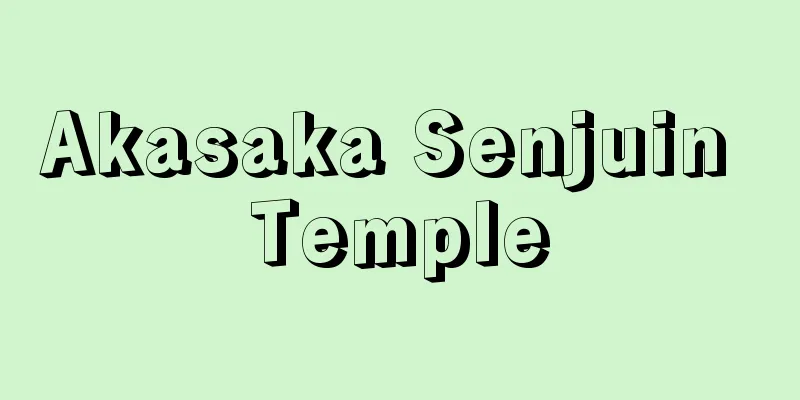Kenmu Code - Kenmushikimoku

|
This ordinance was issued at the start of the Muromachi Shogunate, and could be considered a declaration of policy direction. It was issued on November 7, 1336 (1st year of Engen, 3rd year of Kenmu), just five days after the battle in Kyoto between Ashikaga Takauji's side and Emperor Godaigo's side ended in victory for Takauji. Takauji consulted with Hino Fujinori, Gen'e Hoin, Akashi Yukitsura, Fuse Dojo and other nobles and monks close to the Shogunate, as well as magistrates who were legal experts from the samurai class, on the future direction of government, and the ordinance was then submitted to them. However, the brothers Nakahara Michiaki (Zeen) and Shin'e, who were court nobles and legal scholars, were directly involved in drafting the document. In the preamble, the issue of whether the headquarters of the shogunate should be located in Kamakura is raised, and although it does not explicitly state that Kamakura is inappropriate and that Kyoto is appropriate, it is argued that Kyoto should be the appropriate location. Next, the 17 articles in the main text provide moral regulations such as general frugality, the prohibition of bribery, the restraint of gifts, and the respect for etiquette and honor. It also stipulates that lawsuits should be fair, court procedures should be maintained, the chaos in Kyoto during the war should be rectified, residential land and buildings should be returned to their original owners, and violence should be controlled. As for the shogunate's ruling system, it particularly emphasized the appointment of skilled personnel to shugo, and intended to smooth economic activity in the city by protecting mujinsen and doso. The number 17 may have been a reference to Prince Shotoku's Seventeen-Article Constitution. Furthermore, the latter part of the document declares the continuation of the Kamakura Shogunate system by holding up the Engi and Tenryaku periods of the court nobility and the Hojo Yoshitoki and Yasutoki periods of the samurai society as ideals, while also incorporating the results of the Kenmu Restoration. This can be found in Gunsho Ruiju, Chusei Hoseishiryoshu (Collection of Historical Materials on Medieval Law) (Volume 2), Chusei Shakai Shiso (Medieval Political and Social Thought) (Part 1), etc. [Tokuhiko Ushita] [Supplementary Material] |Source: Shogakukan Encyclopedia Nipponica About Encyclopedia Nipponica Information | Legend |
|
室町幕府の発足に際して出された法令で、施政方針の宣言とでもいうべきもの。1336年(延元1・建武3)11月7日、京都での足利尊氏(あしかがたかうじ)側と後醍醐(ごだいご)天皇側との合戦が尊氏側の勝利に終わったわずか5日後の段階で出された。尊氏が日野藤範(ひのふじのり)・玄恵法印(げんえほういん)・明石行連(あかしゆきつら)・布施道乗(ふせどうじょう)ら、幕府に近い公家(くげ)・僧侶(そうりょ)や、武家の法曹家である奉行人(ぶぎょうにん)などに今後の政道のあり方を諮問し、それに答申する形式をとっている。しかし直接起草にあたったのは公家の法曹家である中原道昭(みちあき)(是円(ぜえん))・真恵(しんえ)の兄弟である。内容は、前文で、幕府の本拠地を鎌倉に置くべきか否かが問題とされ、鎌倉は不適切で、京都が適切であると明言しているわけではないが、京都とすることが適当であると主張されている。次に本文17か条では、一般的な倹約、賄賂(わいろ)の禁止、進物の抑制、礼節・名誉を重んずることなどの道義的規定がなされ、さらに訴訟の公正、裁判手続の維持、戦乱中の京都の混乱を正し、宅地・家屋を元の持ち主に返還し、狼藉(ろうぜき)を取り締まることが定められている。幕府の支配体制としては、とくに守護に器用の人材を登用することを強調し、また無尽銭(むじんせん)・土倉(どそう)などを保護して市中の経済活動を円滑にすることを意図している。17の数は聖徳太子の十七条憲法を意識したものであろうか。さらに後文では、公家社会の延喜(えんぎ)・天暦(てんりゃく)の時代、武家社会の北条義時(よしとき)・泰時(やすとき)の時代を理想として掲げることによって、建武新政の成果をも取り入れながら、鎌倉幕府体制の継承を宣言したものである。『群書類従』、『中世法制史料集』(第2巻)、『中世政治社会思想』(上)などに所収。 [羽下徳彦] [補完資料] |出典 小学館 日本大百科全書(ニッポニカ)日本大百科全書(ニッポニカ)について 情報 | 凡例 |
>>: Added since Kenmu - Kenmuirai Ikka
Recommend
Walking Shinjuku - Kachishinshuku
...However, the "Innkeeper's Register&qu...
Akebikonoha - Akebikonoha
A large moth belonging to the family Noctuidae in...
Quṭb-Minār (English spelling) QutbMinar
…It was founded in 1192-98 by Qutb-ud-din Aibak, ...
Ota Sukemune
Year of death: 1680 Year of birth: 1600 A feudal l...
Chlorous acid - aensosan (English spelling) chlorous acid
Chemical formula: HClO 2 . It is an unstable acid ...
Shuma Ogita
…In January 1674, Matsudaira Mitsunaga's heir...
Hidden Village - Kakurezato
A utopia said to exist in a secluded area, such a...
Kyushu University
A national university corporation. Its predecesso...
Cheboksary (English spelling) Чебоксары/Cheboksarï
The capital of the Republic of Chuvashia in the w...
Motocross
…It began in the United States in 1909 and became...
May flower (plant) (English spelling) Mayflower
...Researchers who subdivide the species of this ...
Angra Mainyu (English spelling)
…(1) the doctrine of the creator himself, as seen...
Ethnomusicology
…A branch of musicology. Because the subject and ...
Ur - Ur (English spelling)
A city in southern Mesopotamia. The ruins are loc...
World Missionary Conference
A world conference to discuss missionary work in m...

![Arunachal Pradesh [State] (English spelling)](/upload/images/67cadea791695.webp)







